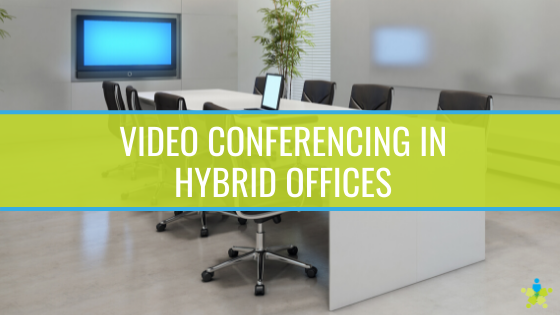[vc_row][vc_column][vc_column_text]
Video Conferencing Is A Perfect Fit For Hybrid Offices
The vast majority of professionals, close to 80 percent, would prefer to work from home at least part of the time. Many of them are getting their wish, as according to an estimate by Global Workplace Analytics, between 25 and 30 percent of office workers will do their job from home more than one day a week. The hybrid office has arrived. With a hybrid office approach, professionals spend some of their time in the office and some of their time from home, working remotely. This offers the best of both worlds, as professionals can maintain critical connections and collaborate in the office and maximize their productivity at home. The challenge for companies running hybrid offices, though, is keeping their remote and onsite employees connected. To solve this issue, many businesses are choosing video conferencing solutions. This is also an ideal solution for companies with multiple branches as face to face interaction via video conferencing promotes strong working relationships and effective collaboration.[/vc_column_text][vc_column_text]Five Reasons Why Video Conferencing Is Needed In Hybrid Offices
Video conferencing is an effective solution in many situations, and is an ideal technology for hybrid environments. Here are five reasons why:[/vc_column_text][vc_column_text css=".vc_custom_1634322338524{padding-right: 35px !important;padding-left: 15px !important;}"]- Video conferencing prevents confusion among teams - As soon as businesses switch to a hybrid office model, there’s the potential for confusion. Who’s working at the office today? Who is at home? Are there meetings that require both remote and onsite employees? If your workers don’t know who is home and who isn’t, there’s a chance that important meetings or tasks slip through the cracks. Video conferencing eliminates this confusion from emerging, as your teams are always a button press away from connecting to each other. Modern video conferencing solutions make it simple to get a meeting going, which speeds up the process. Further, the most popular video conferencing platforms and brands emphasize intercompatibility in their design. If other people or teams need to be brought into a meeting, it won’t derail the conference if different platforms are used to connect with each other.
- Video conferencing brings that face-to-face factor - Effective communication relies heavily on nonverbal cues, like facial expressions and body language. Without these cues, it can be tough for people to understand and interpret what others are saying. That’s a big problem when meetings are used to discuss important initiatives and to delegate tasks. Video conferencing preserves these important nonverbal cues, and can do so with lifelike visual fidelity. In addition to facilitating more effective communication, keeping nonverbal cues around prevents the kind of misunderstanding that can lead to conflict.
- Video conferencing ensures no one is left out - Multiple surveys have found that remote workers feel disconnected from the company and from day-to-day operations. That’s not unexpected when professionals do their work from home, but it’s still a problem because it can prevent good ideas from getting to management and reduce enthusiasm among teams. Video conferencing is one of the best ways to combat this disconnected feeling. Even if some of your employees are based out of other countries, a quick video conference can help them feel like their work is making a difference.
- Video conferencing can drive collaboration among hybrid teams - One of the biggest reasons for encouraging in-office time is for collaboration. It’s essential that your teams brainstorm, exchange ideas, and innovate, and it’s nearly impossible to do that if team members can’t communicate rapidly and clearly. Although some collaboration must be done with people in the same room, video conferencing can make up almost all of the gap with its powerful content sharing and interactivity features. AV manufacturers are mindful of how important collaboration is, so they make it as simple as possible to do it over a video conference. For example, if your conferencing solution includes a dual-display setup, one display can be used to frame whoever is speaking, while the other is for any shared content. Graphics, charts, concept drawings, diagrams, photos, sales figures - anything can be shared during a video conference.
- Video conferencing remains valuable even if the situation changes - Even if a hybrid office approach is only temporary, video conferencing will still fit into your company’s workflow and provide excellent value. Video conferencing is particularly effective for remote and hybrid teams, but even if your employees are confined to a single physical location, the technology can save your employees a lot of time. Video conferencing can be scaled up or down as needed, so even if there’s no need to connect with people outside the office, allowing employees to quickly connect from their desks, instead of gathering in the same room allows more time for productivity.



